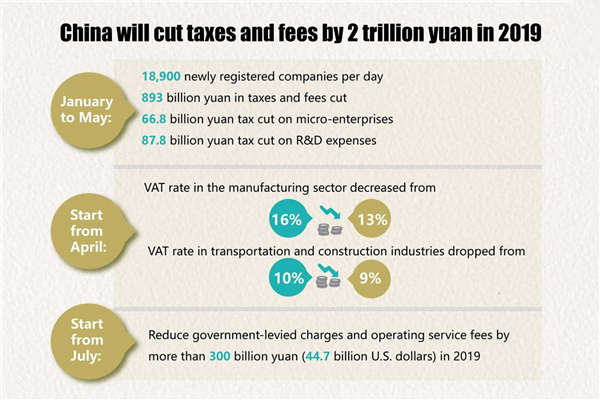Australian small business regulations have become a focal point of debate as local entrepreneurs navigate a landscape riddled with red tape. Recent discussions at the Small Business Roundtable with Minister Dr. Anne Aly highlighted the pressing need to address compliance costs that stifle small business growth in Australia. Business leaders like CPA Australia CEO, Chris Freeland, advocate for a restructuring of the regulatory framework, aiming to reduce unnecessary burdens and promote productivity. With technology adoption among SMEs lagging behind their Asia-Pacific counterparts, streamlining these regulations could pave the way for innovation and improved operational efficiency. By fostering a more supportive environment for young entrepreneurs and reducing bureaucratic complexity, Australia can finally empower its small business sector to thrive.
In the realm of entrepreneurship, navigating the intricate web of Australian business regulations poses significant challenges for small enterprises. As champions of local economic development, small to medium-sized enterprises (SMEs) often find themselves overwhelmed by extensive compliance requirements that hinder their potential for growth. Discussions advocating for regulatory reform emphasize not only the reduction of red tape but also the promotion of technology adoption among these enterprises. Governments must also consider avenues to support the burgeoning interest in business ownership amongst younger generations, as this demographic represents a vital force in shaping the future of Australia’s economic landscape. Empowering entrepreneurs through streamlined processes and targeted assistance can transform the Australian business environment into one that encourages innovation and sustainable growth.
Understanding Australian Small Business Regulations
Australian small business regulations are crafted to ensure fair practices and protect consumers; however, they can often feel overwhelming for small business owners. Regulations encompass a wide range of areas, including tax compliance, workplace safety, and environmental standards. Unfortunately, these regulatory demands can lead to increased compliance costs, which disproportionately affect small businesses that may lack the resources to manage such burdens effectively. This complexity can stifle growth and innovation, making it essential for business owners to stay informed about current laws and requirements that impact their operations.
Moreover, the need for alignment and consistency in reporting is more critical than ever. The proposal to have businesses report information once across relevant platforms resonates strongly with small business owners who are frequently bogged down by redundancy. Streamlining reporting can save time, reduce stress, and allow small enterprises to focus more on growth strategies rather than paperwork. Addressing these regulatory pain points is vital for enhancing productivity within the small business sector.
Reducing Compliance Costs for Small Businesses
Compliance costs are a known barrier to growth among Australian small businesses, often consuming significant portions of their budgets. A rigorous compliance framework can inhibit agility, making it challenging for SMEs to compete with larger corporations that can absorb these costs more easily. The CPA Australia CEO’s call for government action highlights the need for a reevaluation of existing compliance requirements. By simplifying the regulatory landscape, small business owners can allocate more resources to innovation, marketing, and ultimately, expansion — aspects critical to sustaining competition.
The strategy for reducing compliance costs extends beyond just legislative changes; it involves fostering a culture of support where small businesses are educated on their responsibilities and provided with access to tools that make compliance easier. For example, targeted workshops on compliance best practices can help demystify the regulations and enable business owners to navigate their obligations more confidently. This dual approach is necessary to create a conducive environment for small business growth in Australia.
Supporting Technology Adoption Among SMEs
The slow pace of technology adoption among Australian SMEs is a growing concern, particularly when compared to their regional counterparts like Singapore. As highlighted by CPA Australia, many small businesses struggle to embrace digital tools crucial for efficiency and growth. The barriers to adoption—the lack of time, financial resources, and expertise—create a chasm that leaves many businesses at a competitive disadvantage. Encouraging innovation through targeted support programs can mitigate these challenges, allowing entrepreneurs to embrace technology that enhances their operations.
Government initiatives that provide financial incentives alongside training can lead to significant improvements in technology uptake. Much like Singapore, which has invested heavily in helping SMEs digitize their operations, Australia’s small businesses would benefit immensely from similar schemes. By aligning resources effectively, the government can help bridge the gap in technology adoption, enabling an era of growth and increased productivity among Australian small businesses.
Overcoming Bureaucratic Challenges in Small Business Growth
Bureaucratic delays often hinder the growth trajectory of small businesses in Australia. The CPA indicates that an urgent need exists to streamline processes and eliminate red tape that complicates business operations. By simplifying administrative tasks and reducing unnecessary regulatory requirements, small businesses can focus more on core activities such as customer service, product development, and market expansion, fostering higher levels of innovation.
The benefits of addressing bureaucratic obstacles extend beyond efficiency; they can spark a cultural shift towards entrepreneurship among a broader demographic, particularly the youth. Streamlined regulatory processes can empower new and emerging business owners to address market needs creatively without being mired in compliance woes. The future of Australian SMEs hinges on the government’s capacity to improve operational environments through regulatory reform.
Empowering Young Entrepreneurs in Australia
Fostering a new generation of entrepreneurs in Australia is crucial to ensuring the vitality of the small business landscape. With a disproportionately low number of young business owners, there is a concerning trend of untapped talent and potential innovations that remain dormant. CPA Australia echoes this concern, stressing that initiatives aimed at encouraging youth to start their ventures must take precedence. Educating young Australians about the dynamics of entrepreneurship and the associated rewards is fundamental to nurturing this spirit.
Investment in management training, tailored specifically for young entrepreneurs, is essential for overcoming the unique challenges that they face. This includes learning about cash flow management, customer acquisition strategies, and the unpredictabilities of entrepreneurship. Additionally, redesigning educational programs that highlight entrepreneurial skills and the significant advantages of business ownership could play a pivotal role in shifting perceptions and motivating youth to pursue their entrepreneurial dreams.
Strategies for Reducing Red Tape in Business
Reducing red tape is a major concern for Australian small businesses as it directly impacts operational efficiency and growth. CPA Australia advocates for a significant overhaul of policies that perpetuate excessive regulation, proposing the implementation of a system where information is only reported once. This single reporting system protects freedom while simultaneously enhancing transparency between businesses and government agencies.
Simplifying compliance requirements can foster a more supportive environment for small businesses, making it easier for them to navigate challenges. Streamlining processes set under the purview of the government can also free up valuable resources, enabling businesses to invest more in their operations and drive forward innovation. The goal is not only to alleviate burdens but to create a dynamic economic landscape that empowers small businesses to flourish.
The Impact of Technology on Small Business Success
The role of technology in driving small business success cannot be overstated. In today’s digital age, businesses that leverage technology effectively tend to outperform their competitors. Australian SMEs must embrace digital tools and platforms to streamline operations and enhance customer engagement. However, adoption rates are alarmingly low, with many businesses unprepared to transition to a tech-forward model due to financial constraints and lack of expertise.
To tackle this issue, targeted initiatives that offer financial support and guidance in technology adoption can create substantial benefits over time. By creating a framework that encourages SMEs to prioritize digital transformation, Australia can significantly enhance its small business sector’s competitive edge. Emphasizing technology not only improves operational efficiencies but also fosters a spirit of innovation and agility among entrepreneurs.
Creating Support Networks for Small Business Owners
Establishing robust support networks for small business owners is essential for nurturing a vibrant entrepreneurial ecosystem in Australia. Networks that provide mentorship, resources, and shared knowledge empower business owners to navigate challenges and seize new opportunities effectively. These platforms can facilitate connections between experienced entrepreneurs and newcomers, fostering collaboration that drives growth and innovation in the sector.
Investment in support initiatives can also play a crucial role in expanding the reach and sustainability of small businesses. By integrating young entrepreneurs into established networks, newcomers can access mentorship and begin building relationships necessary for thriving in the competitive marketplace. Australia’s small business sector must prioritize the creation of collaborative frameworks that support growth, encourage technology adoption, and ultimately lead to long-term success.
The Future of Small Business Growth in Australia
Looking forward, the future of small business growth in Australia hinges on the ability of the government and stakeholders to adapt to changing economic landscapes. Embracing policies that promote innovation, streamline regulations, and encourage young entrepreneurs will play a pivotal role in shaping the industry. The need for a proactive approach that prioritizes support mechanisms for small businesses is paramount if Australia is to remain competitive in the global market.
With investments in technology adoption, regulatory reform, and targeted support for underserved demographics like young entrepreneurs, the potential for growth is boundless. In this ever-evolving marketplace, the resilience and adaptability of Australian SMEs will be critical in driving economic growth and ensuring a brighter economic future for the nation.
Frequently Asked Questions
What are the current challenges facing small businesses in Australia due to regulations?
Australian small businesses are currently burdened by excessive regulations that lead to high compliance costs. CPA Australia emphasizes that reducing these regulatory burdens is essential for small business growth in Australia, enabling greater productivity and competitiveness in the market.
How can Australian small businesses reduce compliance costs under current regulations?
To reduce compliance costs, Australian small businesses can advocate for streamlined reporting processes that allow them to report information once to multiple government agencies. This approach would alleviate the unnecessary duplication of efforts and minimize the compliance burden, thus supporting small business growth in Australia.
What initiatives are being proposed to reduce red tape for Australian SMEs?
The CPA Australia’s reform agenda suggests a three-part strategy to reduce red tape for Australian SMEs, focusing on enhancing efficiency through improved reporting systems and regular reviews by an independent council to eliminate ineffective regulations that hinder small business operations.
What role does technology adoption play in the growth of small businesses in Australia?
Technology adoption is critical for small business growth in Australia, as evidenced by CPA Australia’s findings indicating that Australian SMEs are lagging compared to other Asia-Pacific counterparts. Investing in technology, supported by government initiatives like grants and training, can significantly improve operational efficiency and market competitiveness.
How is the government supporting young entrepreneurs in Australia?
The government is urged to invest in management training and resources targeted at young entrepreneurs to help them navigate common startup challenges. This support aims to foster business ownership among younger Australians, encouraging them to pursue entrepreneurship and enhancing their contributions to the economy.
What strategies are suggested to enhance the performance of small businesses in Australia?
To enhance performance, a comprehensive review of existing small business regulations is recommended to eliminate unnecessary compliance costs. Additionally, initiatives promoting technology adoption and supporting young entrepreneurs through targeted training can significantly boost small businesses’ productivity and growth potential.
How does compliance affect small business productivity in Australia?
Excessive compliance requirements adversely affect small business productivity in Australia by draining resources and increasing administrative burdens. Reducing compliance costs through efficient reporting systems can free up time and resources for core business activities, thereby enhancing overall productivity.
What are the benefits of reducing regulatory burdens for Australian small businesses?
Reducing regulatory burdens would lead to lower compliance costs, allowing Australian small businesses to allocate more resources towards growth strategies, innovation, and technology adoption. Ultimately, this would improve their competitiveness in the Asia-Pacific region.
| Key Points | Details |
|---|---|
| Regulatory Burden | Small businesses in Australia face excessive regulations, which hinder productivity growth. |
| CPA Australia’s Advocacy | CPA Australia urges the government to reduce compliance costs and streamline reporting processes. |
| Technology Adoption | Australian small businesses lag in technology adoption, impacting growth compared to regional counterparts. |
| Young Entrepreneurs | Australia lacks young business owners, leading to slower growth and innovation in the small business sector. |
| Call to Action | Investment in business management training and a national campaign to promote entrepreneurship among youth is needed. |
Summary
Australian small business regulations have created an environment where many SMEs struggle to thrive due to overwhelming compliance requirements. With the call for action from CPA Australia, it is crucial for the government to reform the regulatory landscape to boost productivity and foster growth. By streamlining reporting processes, supporting technology adoption, and encouraging young entrepreneurs, Australia can enhance the competitiveness and innovation of its small business sector. Investment in management training and awareness campaigns could unlock the potential within burgeoning entrepreneurs, ultimately driving economic growth.



